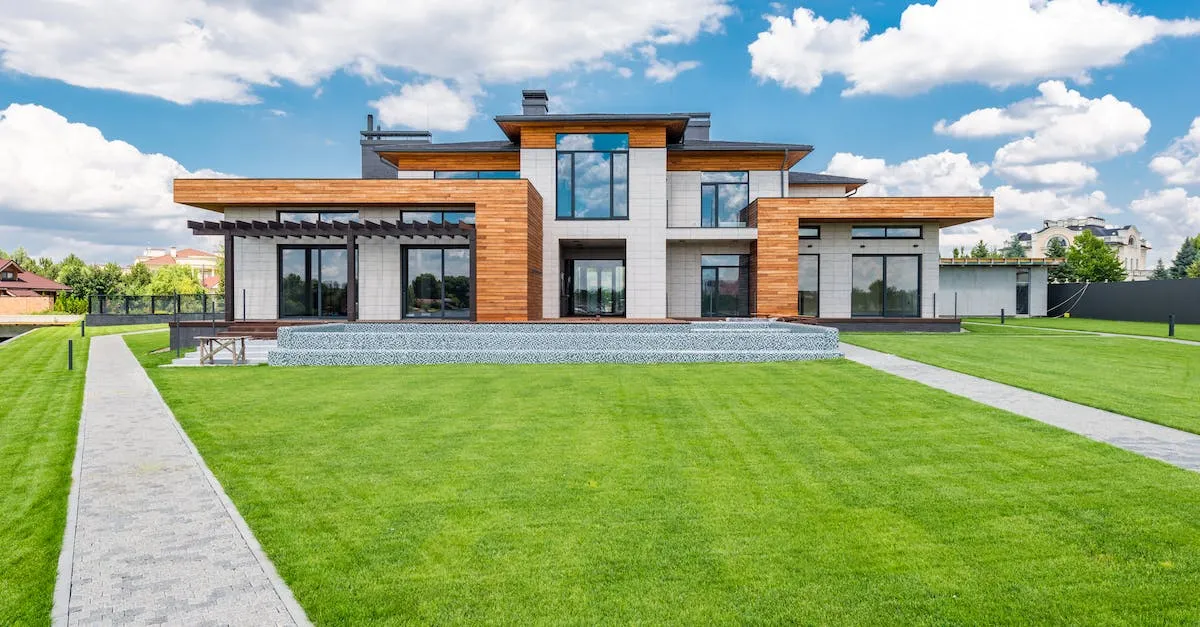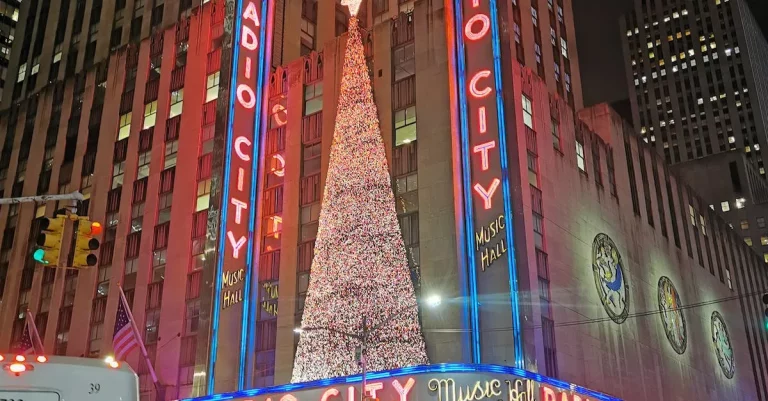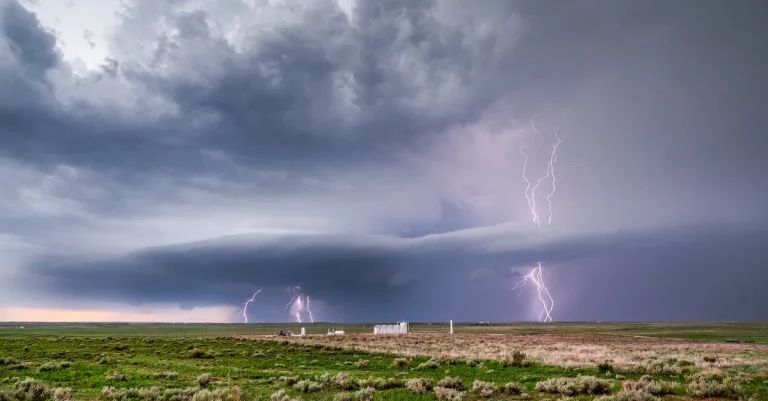Exploring The Grand Mansions And Estates Of New York
With its Gilded Age pedigree, New York City and its surrounding environs are home to some of the most magnificent mansions and grand estates in the country. From vanished Beaux-Arts masterpieces like the Cornelius Vanderbilt II Mansion to extant gems like the Rockefeller Estate in Westchester, these ornate homes provide a glimpse into the lavish lifestyles of New York’s elite over the centuries.
The Great Estates of the Gold Coast
The Gold Coast, located on the North Shore of Long Island, is renowned for its grand mansions and estates that showcase the opulence and wealth of a bygone era. These oversized homes, often referred to as castles, were built by affluent families during the late 19th and early 20th centuries.
Today, they serve as a window into the lavish lifestyles of the elite and offer visitors a glimpse into the past.
Oversized homes on the North Shore of Long Island
The North Shore of Long Island is home to a collection of magnificent estates that once belonged to some of the wealthiest families in America. These homes were built as summer retreats and were designed to impress with their grandeur and architectural splendor.
Each estate boasts extensive grounds, including meticulously manicured gardens, sprawling lawns, and often a private beach or waterfront access.
These homes are characterized by their sheer size, with many boasting over 50 rooms and sprawling across acres of land. The architectural styles vary, ranging from Tudor and Georgian Revival to Italianate and Beaux-Arts.
The exteriors often feature intricate stonework, grand entrances, and magnificent facades that leave visitors in awe.
The Vanderbilt Mansion, Woolworth Estate, others
Among the most famous estates on the Gold Coast is the Vanderbilt Mansion, located in Centerport, New York. Built by William K. Vanderbilt II in the early 20th century, this 24-room mansion is a stunning example of Spanish Revival architecture.
The mansion is now open to the public and offers guided tours, allowing visitors to explore the opulent interiors and learn about the Vanderbilt family’s legacy.
Another notable estate is the Woolworth Estate, also known as Winfield Hall. Built by Frank Winfield Woolworth, the founder of the Woolworth’s chain of stores, this mansion is a masterpiece of Georgian Revival architecture.
The estate features over 56 rooms, including a grand ballroom, and is surrounded by lush gardens and expansive lawns.
Other notable estates on the Gold Coast include the Oheka Castle, the former residence of financier Otto Hermann Kahn, and the Coe Hall at Planting Fields Arboretum, a Tudor Revival mansion surrounded by beautiful gardens.
Architectural influences and common features
The grand estates of the Gold Coast were influenced by various architectural styles, reflecting the tastes and preferences of their wealthy owners. These styles include Tudor Revival, Italian Renaissance, Georgian Revival, Beaux-Arts, and Spanish Revival, among others.
Despite the diverse architectural influences, these estates share some common features. Many feature expansive grounds with formal gardens, reflecting the influence of European palaces and estates. Inside, visitors can expect to find luxurious details such as marble fireplaces, ornate woodwork, grand staircases, and opulent chandeliers.
The rooms are often adorned with exquisite artwork, intricate tapestries, and imported furniture.
Visiting the great estates of the Gold Coast is like stepping back in time and immersing oneself in the splendor of a bygone era. From the architectural marvels to the fascinating stories behind each estate, these mansions offer a unique glimpse into the extravagant lifestyles of the elite.
Plan a visit to one or more of these remarkable estates and prepare to be amazed by their grandeur and beauty.
Gilded Age Mansions of Millionaire’s Row
During the late 19th and early 20th centuries, New York City’s Fifth Avenue became synonymous with wealth and opulence. This stretch of luxurious residences, known as Millionaire’s Row, was home to some of the wealthiest families in American history.
Among the most prominent were the Carnegies, Fricks, and Rockefellers, whose grand mansions still stand as testaments to their incredible wealth and influence.
5th Ave mansions of Carnegie, Frick, Rockefeller
The Carnegie Mansion, located at 2 East 91st Street, was once the home of steel magnate Andrew Carnegie. This massive Beaux-Arts style mansion, designed by architect B. Green, features intricate details and extravagant furnishings.
Today, it is the home of the Cooper Hewitt, Smithsonian Design Museum, showcasing the history of design and innovation.
Another notable mansion on Fifth Avenue is the Frick Mansion, now known as the Frick Collection. This former residence of industrialist Henry Clay Frick boasts a stunning collection of European paintings, sculptures, and decorative arts.
Visitors can explore the opulent interiors, including the famous Oval Room, which showcases masterpieces by artists such as Vermeer, Rembrandt, and Bellini.
The Rockefeller Mansion, located at 10 West 54th Street, was the residence of John D. Rockefeller Jr. and his family. This grand mansion, designed in the Georgian revival style, features a lavish interior with magnificent chandeliers, marble fireplaces, and a stunning art collection.
Today, it is the headquarters of the Museum of Modern Art, housing one of the world’s most extensive collections of modern and contemporary art.
The opulence and grandeur of the interiors
The interiors of these Gilded Age mansions were designed to impress and display the wealth and power of their owners. Lavish ballrooms, ornate staircases, and exquisite details can be found throughout these magnificent homes.
From the intricate woodwork to the stunning stained glass windows, every corner of these mansions exudes elegance and grandeur. Visitors can step back in time and imagine the extravagant parties and gatherings that took place within these walls.
One of the most iconic features of these mansions is their extensive art collections. The Carnegies, Fricks, and Rockefellers were avid art collectors, amassing some of the finest masterpieces of their time.
Paintings by renowned artists such as Monet, Renoir, and Van Gogh adorned the walls, creating a museum-like atmosphere within these private residences.
Preserved historic houses like the Frick Museum
While many of the original Gilded Age mansions have been demolished or repurposed, some have been meticulously preserved and transformed into museums. The Frick Collection, for example, allows visitors to experience the splendor of Henry Clay Frick’s former residence while admiring the remarkable art collection he amassed during his lifetime.
Preserving these historic houses not only allows us to appreciate the architectural beauty of the past but also provides a glimpse into the extravagant lifestyles of the wealthiest individuals in American history.
These mansions serve as reminders of the immense wealth and influence that shaped New York City during the Gilded Age.
For more information on the Gilded Age mansions and estates of New York, you can visit the official websites of the Cooper Hewitt, Smithsonian Design Museum (https://www.cooperhewitt.org/), the Frick Collection (https://www.frick.org/), and the Museum of Modern Art (https://www.moma.org/).
J.P. Morgan’s Massive Estate on Madison Ave
J.P. Morgan, the renowned American financier and banker, was known for his exquisite taste and opulent lifestyle. One of his most impressive achievements was the construction of his massive estate on Madison Avenue in New York City.
The mansion, completed in 1903, was a symbol of Morgan’s wealth and influence.
Overview of construction and interior details
The construction of J.P. Morgan’s estate was a monumental undertaking. The mansion spanned an entire city block and featured a grand façade adorned with intricate architectural details. The interior was equally impressive, with luxurious materials such as marble, gold leaf accents, and ornate woodwork.
The mansion boasted multiple floors, including a grand ballroom, library, and private quarters for Morgan and his family.
The attention to detail in the estate’s design was unparalleled. Elaborate chandeliers, hand-carved furniture, and priceless artwork adorned the rooms. Every aspect of the mansion was meticulously crafted to reflect Morgan’s refined taste and his status as one of the most powerful men in America.
Art and artifacts housed in the mansion
J.P. Morgan was not only a financier but also a passionate collector of art and artifacts. His mansion served as a showcase for his extensive collection, which included works by renowned artists such as Rembrandt, Van Gogh, and Monet.
Visitors to the estate were treated to a visual feast of masterpieces, displayed in carefully curated galleries throughout the mansion.
In addition to fine art, Morgan’s collection also included rare manuscripts, ancient artifacts, and historical documents. It was a testament to his intellectual curiosity and love for knowledge. The mansion became a haven for scholars, artists, and intellectuals who were invited to explore and appreciate Morgan’s collection.
Event spaces today and public access
Today, J.P. Morgan’s estate on Madison Avenue continues to be an iconic landmark in New York City. While the mansion is no longer privately owned, it has been converted into event spaces and is available for private functions and special events.
The grand ballroom, with its soaring ceilings and elegant décor, is a popular choice for weddings, galas, and corporate gatherings.
In addition to hosting private events, the mansion also offers public access to certain areas. The museum-quality art galleries are open to the public, allowing visitors to experience the grandeur of J.P. Morgan’s collection firsthand.
It is a unique opportunity to step back in time and appreciate the wealth and cultural significance of one of America’s most influential figures.
To learn more about J.P. Morgan’s estate and its current offerings, visit https://www.themorgan.org/.
Palatial Homes in the Hudson River Valley
The Hudson River Valley is renowned for its stunning natural beauty and rich history. One of the highlights of this region is the collection of grand mansions and estates that dot the landscape. These palatial homes offer a glimpse into the opulence and grandeur of a bygone era.
Riverfront estates like the Vanderbilt Mansion
One of the most iconic examples of these palatial homes is the Vanderbilt Mansion, located in Hyde Park, New York. This sprawling estate was once the home of Frederick William Vanderbilt, a member of the prominent Vanderbilt family.
The mansion boasts 54 rooms and is a stunning example of Beaux-Arts architecture. Visitors can explore the lavish interiors, stroll through the beautifully manicured gardens, and enjoy panoramic views of the Hudson River.
Did you know? The Vanderbilt Mansion was designated a National Historic Site in 1940 and is now open to the public for tours and events.
Prominent architects who built these homes
These palatial homes were often designed by some of the most renowned architects of their time. Architects such as Frederick Law Olmsted, who is famous for designing Central Park in New York City, and Stanford White, a prominent figure in the American Renaissance movement, left their mark on the Hudson River Valley with their grand designs.
Another notable architect who contributed to the grandeur of the region was Calvert Vaux. Vaux, in collaboration with landscape architect Andrew Jackson Downing, designed many of the palatial homes in the Hudson River Valley, blending stunning architecture with the natural beauty of the surroundings.
Conserving natural landscapes on large properties
These palatial homes were not only a display of wealth and luxury but also a testament to the appreciation for the natural landscapes of the Hudson River Valley. Many of these estates were built on large properties that encompassed vast stretches of land, allowing for the conservation of the region’s natural beauty.
Today, many of these estates have become public parks or historic sites, with efforts made to preserve the natural landscapes and ensure their accessibility to the public. Visitors can now enjoy the beauty of these estates while also learning about their historical significance and the efforts made to protect and conserve the surrounding environment.
Recommended website: To learn more about the grand mansions and estates of the Hudson River Valley, visit https://www.hudsonvalley.org.
Mansions in Westchester County
History of estates in Westchester towns
Westchester County, located in New York, is home to a rich history of magnificent estates and mansions. The towns within Westchester County have a long-standing tradition of attracting wealthy families who sought to build grand homes away from the hustle and bustle of New York City.
The history of these estates dates back to the late 19th and early 20th centuries when industrialists, financiers, and other affluent individuals sought to establish their presence and showcase their wealth through the construction of opulent mansions.
One notable town in Westchester County known for its historic estates is Tarrytown. The town boasts a collection of stunning properties that reflect the architectural styles popular during the Gilded Age.
Some of the most well-known estates in Tarrytown include Lyndhurst and Kykuit, which were once the homes of prominent families such as the Vanderbilts and the Rockefellers.
Another town in Westchester County with a rich mansion history is Bronxville. The village is known for its picturesque streets lined with grand homes, many of which were designed by renowned architects of the time.
The estates in Bronxville feature a mix of architectural styles, including Tudor Revival, Mediterranean Revival, and Colonial Revival.
Unique features of homes like Lyndhurst
One of the standout estates in Westchester County is Lyndhurst, located in Tarrytown. Built in the mid-19th century, Lyndhurst is a prime example of Gothic Revival architecture. The mansion features intricate stonework, pointed arches, and a stunning tower that offers panoramic views of the Hudson River.
Inside Lyndhurst, visitors are treated to a glimpse of the opulent lifestyle enjoyed by the estate’s original owner, Jay Gould. The mansion is filled with lavish furnishings, ornate woodwork, and breathtaking stained glass windows.
The beautifully landscaped grounds surrounding Lyndhurst further enhance the grandeur of the estate, making it a must-visit destination for architecture and history enthusiasts.
Activities available on the grounds today
While these grand estates in Westchester County are reminders of a bygone era, they continue to serve as cultural landmarks and offer a range of activities for visitors to enjoy today. Many of these estates have been converted into museums, allowing visitors to explore the rich history and art collections housed within their walls.
Additionally, the expansive grounds of these estates provide opportunities for outdoor activities such as walking tours, picnicking, and even special events like outdoor concerts and garden parties. Visitors can immerse themselves in the beauty of the meticulously maintained gardens and lawns, taking in the breathtaking scenery that surrounds these historic mansions.
To learn more about the mansions and estates in Westchester County, you can visit the official websites of Lyndhurst (www.lyndhurst.org) and Kykuit (www.hudsonvalley.org/historic-sites/kykuit).
Conclusion
With their palatial architecture, lavish decor, and manicured grounds, the grand mansions of New York offer a captivating look into the lives of the ultra-wealthy and the remarkable history of the city. Exploring these estates provides an unforgettable glimpse into New York’s Gilded Age past.








